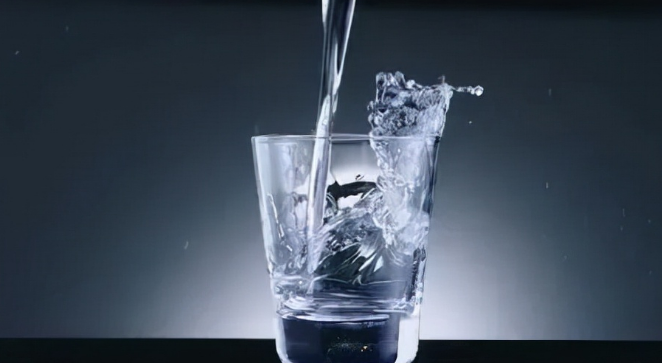Wine culture has always been very popular in China. "Wine is like character", "a thousand cups of wine are few", "only wine can forget sorrow". Wine has long become a cultural symbol in China, with the implication of reunion, relief of sorrow, empathy and so on.
People often compare white wine to life, with mixed tastes and different tastes, and the final fusion into the mouth is full and abundant. But scientifically speaking, baijiu has six flavors: sour, sweet, bitter, spicy, astringent and salty. These different flavors in baijiu have their own corresponding substances.
Why does baijiu have so much flavor?
What is the taste of basil? If you ask someone who does not know the basics, you will get adjectives like spicy, burning and choking, while if you ask a person who likes baijiu, the keywords fragrant, mellow and cool will appear 39bet-xì dách-phỏm miền bắc-tiến lên miền bắc-xóc đĩa-game bắn cá.
Liquor composition is very complicated, in addition to water, alcohol, phenols, acids, aldehydes, sugar, trace elements, such as esters. Moreover, each subclass of plant-based also contains more complex, the composition and content of different form the different liquor taste, flavor, or smell sweet, some are sour, sweet, bitter, some make the color with color. This is where the budget is most vibrant.
 What is the reason for sour, sweet, bitter, hot and astringent salty?
What is the reason for sour, sweet, bitter, hot and astringent salty?
1, acid
There must and must be certain sour components in liquor, which together with other aromatic substances constitute the aroma of liquor. But the content should be appropriate, if the excess, not only makes the wine taste rough, but also affects the wine's "back to sweet" feeling, after a short taste. The main representatives of sour substances in wine are acetic acid, lactic acid, succinic acid, malic acid, citric acid, caproic acid and fruit acid.
2, sweet
The sweetness in liquor is mainly derived from alcohol. Especially for polyols, because the sweetness comes from the alcohol group, when the hydroxyl group of the substance increases, the sweetness of the alcohol also increases. Polyols have sweet groups and auxiliary sweet groups, which are much sweeter than alcohol with one alcohol group.
The main representative of the sweet wine are: glucose, fructose and galactose, sucrose, maltose, lactose and has six alcohol, glycerin, 2, 3 - butanediol, butyl alcohol, butyl five alcohol, diacetyl, amino acids, such as the material, mainly is the alcohol in the case of a hydroxyl group, only three molecules can produce sweet hexyl alcohol solution, hydroxyl number of substances, sweet taste is increased.
It is ok to have a moderate amount of sweetness in liquor, but if it is too much, it will not reflect the style of liquor. Too little wine, no return to the sweet end.
3, bitter
The bitterness in liquor is often caused by an excess of higher alcohols, succinic acid, a small amount of tannin, and more furfural and phenolic compounds. Main representative: quinine (0.005%); inorganic metal ions (such as Mg, Ca, NH3 and other salts); tyrosol, chromic alcohol, n-propanol; n-butyl alcohol; isobutanol (most bitter); isoamyl alcohol; 2-3-butanediol; β-phenylethanol; furfural. 2-ethyl acetal; butyrenal and certain esters.
4, hot
Spiciness is not a taste. It is a painful sensation that irritates the lining of the nose and mouth. The spiciness in wine is caused by burning pain that stimulates nerve fibers that feel pain. The appropriate spicy flavor has the effect of straining the taste and improving the appetite. But too much spiciness in wine is not good, and even a trace of spiciness in wine is indispensable.
Aldehydes are the main representatives of the spicy substances in liquor. Such as furfural, acetaldehyde, acetal, acrolein, butenal and tert-butanol, tert-amyl alcohol, acetone, ethyl formate; ethyl acetate and so on.
Nowadays, baijiu has a number of other flavors besides sour, sweet, bitter and hot, but some flavors are not easy to find when tasting it. When you put two bottles of wine next to each other, sometimes you can see the difference. For example, some wine has an astringent taste, mainly excessive lactic acid and tannin, lignin and its decomposition of acid compounds. If you drink it, you will feel astringent, and the experience will not be good.
In addition to the astringency, some wines taste salty. Halogen element ions, organic alkali metal salts, table salt, sulfuric acid, nitric acid are salty substances. These substances slightly in excess of the wine will make the wine salty, harmful to the flavor of the wine. Therefore, when drinking astringent and salty, it will affect the overall style of the wine, and high-quality liquor will avoid astringent and salty in the process of brewing.
Some people will pour the wine into their palm and rub it when they taste or buy it. If it is grain wine, generally the smell will have a mushy and fragrant, such liquor is generally good wine. If we smell mixed, or chaff, or even a stench, it is bad liquor.
The odor in baijiu is, of course, undesirable, but it is all contained in baijiu, which is masked rather than highlighted by the stimulant aroma. First, the quality of white wine and new wine have an obvious odor. 2 IT is WHEN some KIND OF fragrance material is TOO thick and excessively prominent, sometimes also can present stink.
